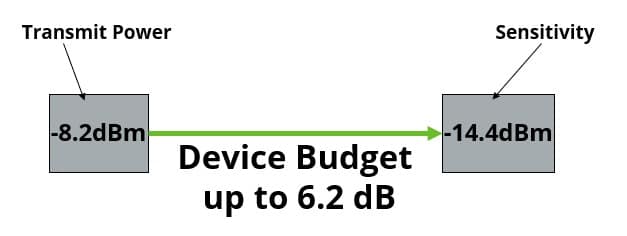The Most Important Number for Optical Transceivers
Posted by Tim Yanda on Nov 5, 2020

When comparing optical transceivers as part of your network planning, several specifications and figures need to be reviewed. However, a single issue takes precedence — link budget.
In this article, we will look at how link budgets are calculated and used best.
Link Budget — What it is and Where it Came From
Simply put, link budget is the total amount of optical power available over a single fiber span between two optical transceivers, measured in decibel milliwatts (dBm). The basic calculation is derived from the minimum output power value of the transmitter (Tx) on one end to the sensitivity of the receiver (Rx) on the other side of a simple point-to-point connection. For example, let’s look at the values for some typical transceivers:

This is the 10GSFP+E-LR. Its minimum output power is -8.2dBm, and its receiver sensitivity is -14.4dBm.

Therefore, its link budget is 6.2dBm (-8.2 – (-14.4) = 6.2dBm).
By contrast, the 10GSFP+E-ZR has minimum Tx and Rx values of 0.0dBm and -23.0dBm, respectively, for a corresponding link budget of 23.0dBm.

These two examples illustrate the relationship between rated distance and link budget; the higher the link budget, the longer the rated distance. Therefore, rated distance is the expression of distance a transceiver should cover after factoring in standard levels of loss over the link (e.g., fiber cable loss specifications, connector loss, etc.).
Using Link Budgets
While rated distance is useful for preliminary application sizing, it is often a best-case scenario guideline. This is why it is incredibly important to know your link budget while validating your deployment by accurately measuring the actual loss on your fiber link. This will ensure that the total loss in your system doesn’t exceed the link budget. This is especially true if your linkspan approaches the specified rated distance. Just remember — always err on the conservative side!
In our next article, we will discuss the importance of link budget to passive WDM architectures.